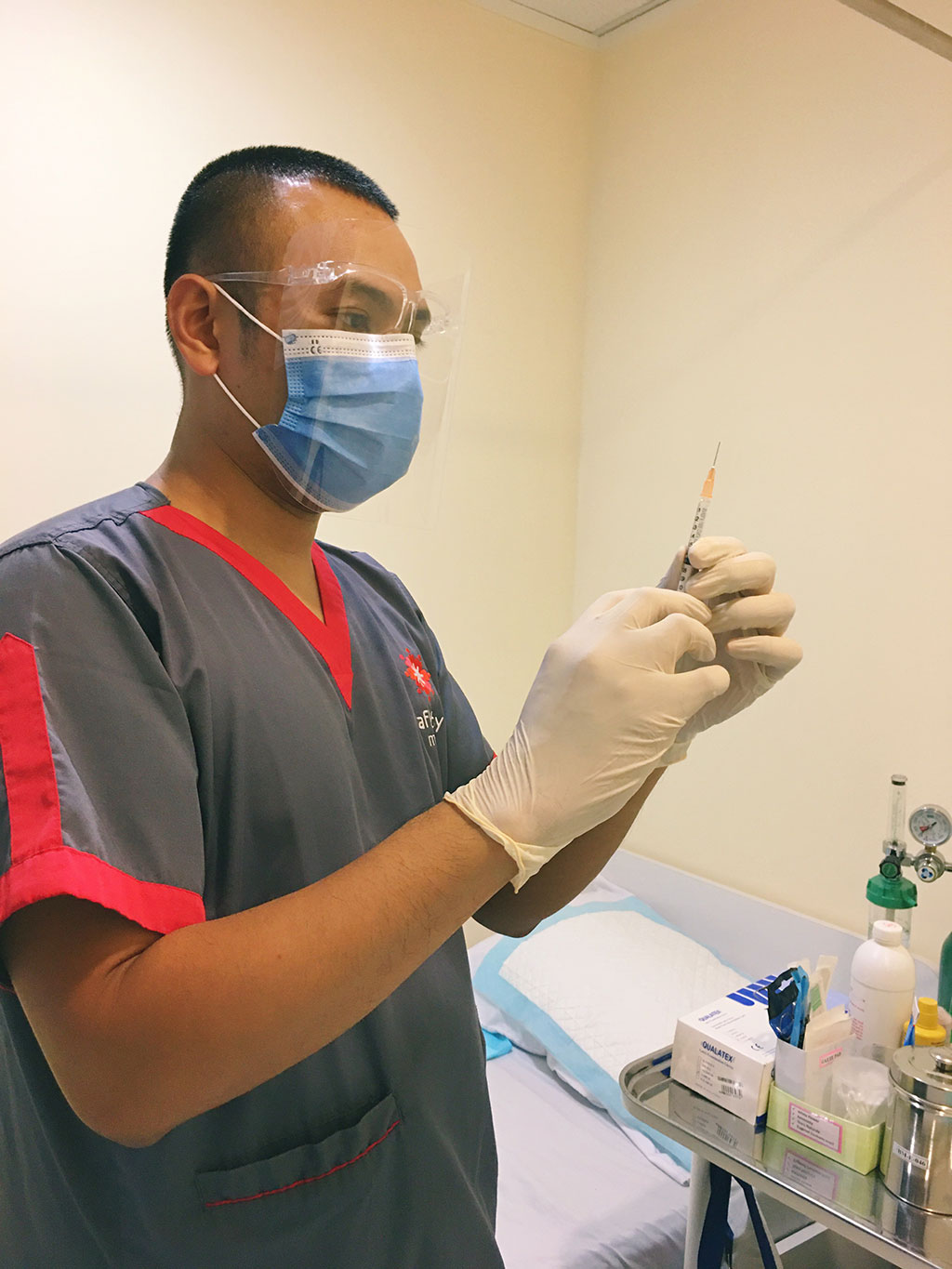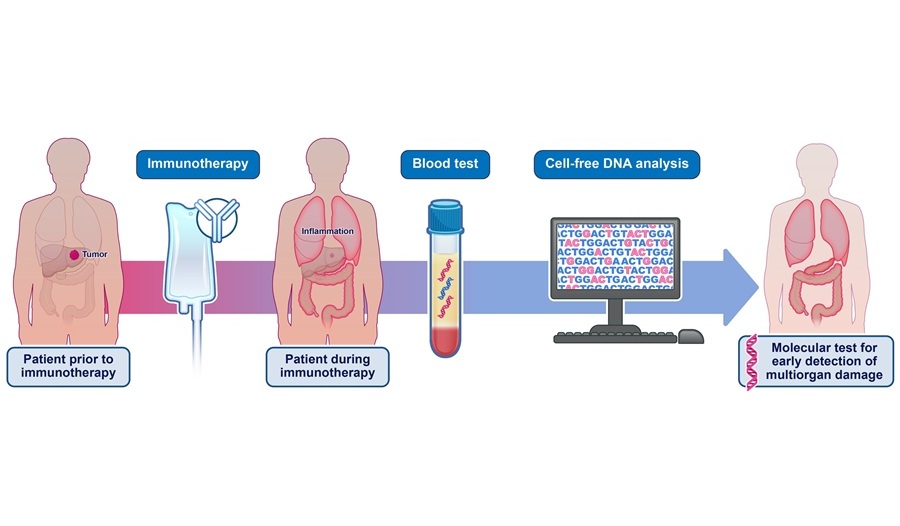Unified Approach Could Prevent Unnecessary Blood Tests in PICU without Increasing Sepsis Risk
|
By LabMedica International staff writers Posted on 03 May 2022 |

When a patient in the pediatric intensive care unit (PICU) develops a fever, physicians often routinely order a blood culture to identify the cause, particularly if they have reason to worry about sepsis, a life-threatening condition that occurs when chemicals released by immune system cells in the bloodstream to fight an infection trigger inflammation and shock throughout the body. However, repeated blood draws along with the use of antibiotics while awaiting culture results contribute to a rise in antibiotic resistance, leading to additional testing and extending the hospital length of stay. Now, researchers have developed and demonstrated the safety of a decision support program that appears to substantially reduce the number of blood draws in the PICU, and is likely to reduce antibiotic prescriptions without increasing the risk of sepsis.
The new study which was a national collaborative of 14 institutions and their experts, including researchers at Johns Hopkins University (Baltimore, MD, USA), builds on programs already in place that have safely reduced the use of other diagnostic tests, such as urine cultures. According to data from the U.S. Centers for Disease Control and Prevention, about 30% of antibiotics used in hospitals are unnecessary or prescribed incorrectly. Previous studies from other researchers have found that more than half of patients in the PICU often receive antibiotics for symptoms such as fever that may arise from noninfectious illnesses or even weaning from some medications.
In their study, the research team at Johns Hopkins Children’s Center led a national multidisciplinary collaborative of experts in pediatric infectious diseases, critical care medicine, quality improvement and other fields called BrighT STAR (Testing STewardship to reduce Antibiotic Resistance). The goal was to explore and compare existing studies and practices, and produce guidance recommendations to reduce blood draws in patients with low suspicion or risk for sepsis, and to measure the impact of the algorithm on blood culture rates, broad-spectrum antibiotic use and other patient outcomes. The 14 participating sites were diverse with respect to institution size, patient population and geographic area. Johns Hopkins Medicine investigators provided each site, which had its own team of experts, with a pre-implementation assessment tool while coaching them to launch their own quality improvement programs and strategies to execute the plans.
While the composition of the clinical support tools varied, each institution sought to standardize practices across its unit and reduce variability in decisions in ordering blood cultures, as well as highlight patient safety considerations. Blood culture rates, along with other measures, were tracked and reported monthly. The coordinating team held regular calls with individual sites and the larger collaborative throughout all steps of the project, conducted between 2017 and 2020.
In the 24-month period prior to implementation of the quality improvement algorithms, 41,731 blood cultures were performed at all 14 sites, compared with 22,408 cultures in the 18-month post-implementation period. Across sites, the median blood culture rate dropped from 146 per 1,000 patient days/month before implementation to 99 per 1,000 patient days/month after. Overall, 13 of 14 sites reduced their blood culture rates in the post-implementation period between 15% and 58%. Across the 14 sites, the blood culture rate was reduced by an average of 34% between the study’s pre- and post-implementation time frames (156.9 blood cultures per 1,000 patient days/month to 104.1 blood cultures per 1,000 patient days/month).
In the 11 sites that reported on antibiotic use, results showed a 13% overall average reduction in the amount of antibiotics prescribed (506.0 versus 440.3 total days per 1,000 patient days/month). At all 14 sites, central line-associated bloodstream infections decreased by 36% (1.79 to 1.14 per 1,000 central line days/month). There was no significant change in the rates of one of the most frequent and dangerous hospital-acquired infections, Clostridioides difficile (0.38 vs. 0.36 infections per 1,000 patient days/month). Mortality rates, length of stay and readmission in the PICU, as well as overall hospital readmissions, were similar before and after program implementation.
The research team has cautioned that the study may have missed instances in which antibiotics were prescribed without collecting blood cultures, which could have increased the amount prescribed. Also, all sites enrolled in the study had clinicians and others experienced in quality improvement. The researchers additionally say their analyses do not account for variations in individual site implementation plans. However, they believe their concept will help change clinician decision-making and, ultimately, benefit patients. The researchers are seeking to expand and implement a similar approach at all hospitals across the nation. They are also investigating ways to scale this concept to other hospital units, including those caring for adults.
“These findings suggest that multidisciplinary efforts to standardize blood culture collection and avoid unnecessary testing in the PICU can be done successfully and safely in diverse settings, and that reducing blood culture use can, in turn, reduce broad-spectrum antibiotic use,” said pediatric infectious diseases specialist Aaron Milstone, M.D., M.H.S., who is also a professor of pediatrics at the Johns Hopkins University School of Medicine and an expert on systems designed to prevent hospital-acquired infections and improve patient safety.
Related Links:
Johns Hopkins University
Latest Critical Care News
Channels
Clinical Chemistry
view channel
Online Tool Detects Drug Exposure Directly from Patient Samples
Doctors often rely on patient interviews and medical records to determine what medications a person has taken, but this information is frequently incomplete. People may forget drugs they used, take over-the-counter... Read more
Chemical Imaging Probe Could Track and Treat Prostate Cancer
Prostate cancer remains a leading cause of illness and death among men, with many patients eventually developing resistance to standard hormone-blocking therapies. These drugs often lose effectiveness... Read moreMolecular Diagnostics
view channel
CLIA Test Identifies Head and Neck Cancer Recurrence from Post-Surgical Lymphatic Fluid
While the lymphatic system’s critical role in metastasis has long been recognized, routine access to patient lymph has been elusive. Now, a non-invasive process can access lymph through the collection... Read more
New 15-Minute Hepatitis C Test Paves Way for Same-Day Treatment
Chronic hepatitis C infection affects an estimated 50 million people worldwide and causes around 242,000 deaths each year, largely due to cirrhosis and liver cancer. Although the infection is curable with... Read moreHematology
view channel
MRD Tests Could Predict Survival in Leukemia Patients
Acute myeloid leukemia is an aggressive blood cancer that disrupts normal blood cell production and often relapses even after intensive treatment. Clinicians currently lack early, reliable markers to predict... Read more
Platelet Activity Blood Test in Middle Age Could Identify Early Alzheimer’s Risk
Early detection of Alzheimer’s disease remains one of the biggest unmet needs in neurology, particularly because the biological changes underlying the disorder begin decades before memory symptoms appear.... Read more
Microvesicles Measurement Could Detect Vascular Injury in Sickle Cell Disease Patients
Assessing disease severity in sickle cell disease (SCD) remains challenging, especially when trying to predict hemolysis, vascular injury, and risk of complications such as vaso-occlusive crises.... Read more
ADLM’s New Coagulation Testing Guidance to Improve Care for Patients on Blood Thinners
Direct oral anticoagulants (DOACs) are one of the most common types of blood thinners. Patients take them to prevent a host of complications that could arise from blood clotting, including stroke, deep... Read moreImmunology
view channel
Blood Test Could Detect Adverse Immunotherapy Effects
Immune checkpoint inhibitors have transformed cancer treatment, but they can also trigger serious immune-related adverse events that damage healthy organs and may become life-threatening if not detected early.... Read more
Routine Blood Test Can Predict Who Benefits Most from CAR T-Cell Therapy
CAR T-cell therapy has transformed treatment for patients with relapsed or treatment-resistant non-Hodgkin lymphoma, but many patients eventually relapse despite an initial response. Clinicians currently... Read moreMicrobiology
view channel
Blood-Based Diagnostic Method Could Identify Pediatric LRTIs
Lower-respiratory tract infections (LRTIs) are a leading cause of illness and death worldwide, and pneumonia is the leading infectious cause of death in children under five, claiming the lives of over... Read more
Rapid Diagnostic Test Matches Gold Standard for Sepsis Detection
Sepsis kills 11 million people worldwide every year and generates massive healthcare costs. In the USA and Europe alone, sepsis accounts for USD 100 billion in annual hospitalization expenses.... Read moreRapid POC Tuberculosis Test Provides Results Within 15 Minutes
Tuberculosis remains one of the world’s deadliest infectious diseases, and reducing new cases depends on identifying individuals with latent infection before it progresses. Current diagnostic tools often... Read more
Rapid Assay Identifies Bloodstream Infection Pathogens Directly from Patient Samples
Bloodstream infections in sepsis progress quickly and demand rapid, precise diagnosis. Current blood-culture methods often take one to five days to identify the pathogen, leaving clinicians to treat blindly... Read morePathology
view channel
Rapid Low-Cost Tests Can Prevent Child Deaths from Contaminated Medicinal Syrups
Medicinal syrups contaminated with toxic chemicals have caused the deaths of hundreds of children worldwide, exposing a critical gap in how these products are tested before reaching patients.... Read more
Tumor Signals in Saliva and Blood Enable Non-Invasive Monitoring of Head and Neck Cancer
Head and neck cancers are among the most aggressive malignancies worldwide, with nearly 900,000 new cases diagnosed each year. Monitoring these cancers for recurrence or relapse typically relies on tissue... Read more
Common Health Issues Can Influence New Blood Tests for Alzheimer’s Disease
Blood-based tests for Alzheimer’s disease are transforming diagnosis by offering a simpler alternative to spinal taps and brain imaging. However, many people evaluated at memory clinics also live with... Read more
Blood Test Formula Identifies Chronic Liver Disease Patients with Higher Cancer Risk
Chronic liver disease affects millions worldwide and can progress silently to hepatocellular carcinoma (HCC), one of the deadliest cancers globally. While surveillance guidelines exist for patients with... Read moreTechnology
view channel
Machine Learning Models Diagnose ALS Earlier Through Blood Biomarkers
Amyotrophic lateral sclerosis (ALS) is a rapidly progressive neurodegenerative disease that is notoriously difficult to diagnose in its early stages. Early symptoms often overlap with other neurological... Read more
Artificial Intelligence Model Could Accelerate Rare Disease Diagnosis
Identifying which genetic variants actually cause disease remains one of the biggest challenges in genomic medicine. Each person carries tens of thousands of DNA changes, yet only a few meaningfully alter... Read moreIndustry
view channel
BD and Penn Institute Collaborate to Advance Immunotherapy through Flow Cytometry
BD (Becton, Dickinson and Company, Franklin Lakes, NJ, USA) has entered into a strategic collaboration with the Institute for Immunology and Immune Health (I3H, Philadelphia, PA, USA) at the University... Read more





















